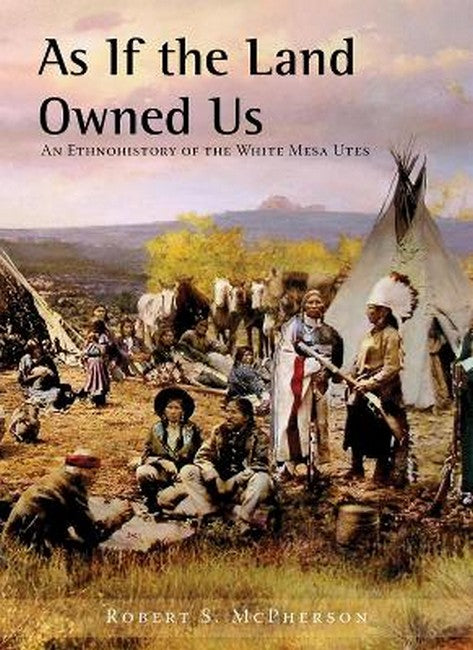Robert S. McPherson is an associate professor at the College of Eastern Utah-San Juan Campus in Blanding, Utah, as well as an adjunct professor at the University of Utah. He is the author of a number of books on the history and cultures of the Four Corners region, including Comb Ridge and Its People: The Ethnohistory of a Rock, winner of the 2009 Utah Book Award for nonfiction.
Request Academic Copy
Please copy the ISBN for submitting review copy form
Description
List of Maps Acknowledgments Introduction 1. White Mesa Ute Origins and PuwA-v: Creating the World, Empowering the Universe 2. "It Was as If the Land Owned Us": Ties to the Land, Resources for the People 3. Daily Life in an Austere Environment: Weenuche Beliefs and Life Cycle, 1880s 4. The Invasion Begins: Hispanic Entradas, American Trade, and the Mormon Mission, 1600-1855 5. "Enemies Like a Road Covered with Ice": Expanding Weenuche Dominance, 1855-1870 6. Decade of Decision, 1870-1880: Losing Land, Gaining Restrictions 7. Stemming the Flood, 1880-1882: Miners, Cowboys, and Settlers 8. Winning the Battles, Losing the War: Military Operations and Cowboy Incursions, 1882-1885 9. Agony with Little Ecstasy: Hunting, Travel, and Subsistence Curtailment, 1885-1895 10. The Replevied Present: San Juan County, the Southern Utes, and What Might Have Been, 1895-1900 11. "Only Bullets Talk Now": Turmoil and Dissent in a Shrinking World, 1900-1915 12. Posey and the Last White Uprising: Ending the Cycle of Violence, 1915-1923 13. Avikan: Remembering the Homeland, 1923-1941 14. Education, Economics, and Integration: Establishing the White Mesa Community, 1923-1960 15. People and Perception: Neighbors' Views Across a Chasm, 1860-1960 16. Circles, Trees, and Bears: Empowering the Weenuche Universe 17. Adoption, Adaptation, and Abandonment: Changing Weenuche Religious Practices, 1900-2010 18. Ironic Industries and Traditional Ties: Shifting Fortunes of the White Mesa Utes, 1950-2010 Epilogue Notes Bibliography Index
"McPherson's ethnohistory of the White Mesa Ute people is exceptional. It is story and document, combining indigenous voices with non-Native accounts into a superbly crafted whole. It serves as a worthy model for any history-regional, ethnic, or otherwise-well fulfilling the author's aim to provide a 'bridge to contemporary generations' ?for a long forgotten people, their places, and times."-Catherine S. Fowler, University of Nevada, Reno "An essential source on the White Mesa Ute Indians. Setting the tone for each chapter, a moving introductory quotation from a Ute speaker illustrates attitudes and beliefs of the people, and the author offers several personal descriptions of people and places. A remarkable number of photographs, archival and contemporary, complement the narrative."-Colorado Book Review

